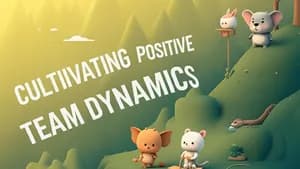Diversity of thought and perspective is crucial for innovation and creativity. This article provides insights on embracing differences, leveraging diverse skill sets, and fostering inclusivity to create a dynamic and productive team. Whether you are a student working on a group project, a parent supporting your child's educational journey, or a member of any collaborative environment, understanding the power of diversity is essential for success. Let's explore how to harness this power and cultivate a thriving team environment.
The Power of Diverse Perspectives
Imagine a group project where everyone thinks and approaches problems in the same way. This homogeneity can lead to limited solutions and a lack of critical thinking. However, when you bring together individuals with different backgrounds, experiences, and thought processes, you create a fertile ground for innovation. Each individual brings a unique perspective, enriching the team's understanding of the task at hand.
For example, during a class discussion on a complex historical event, students with diverse cultural backgrounds might offer contrasting interpretations based on their lived experiences and family histories. This exchange of perspectives fosters a deeper understanding of the topic, leading to a more nuanced and complete analysis. In the real world, businesses and organizations are increasingly realizing the value of diverse teams in addressing complex problems and developing innovative solutions.
Leveraging Diverse Skill Sets
Every individual possesses a unique set of skills and talents. When you assemble a team with diverse skill sets, you create a synergistic effect where individual strengths complement each other, maximizing team productivity. Imagine a group project where one student excels in research, another in creative writing, and a third in presentation skills. This blend of abilities can lead to a well-rounded and impactful project. By acknowledging and appreciating each individual's unique contribution, you can create a powerful and cohesive unit.
Think about your own strengths and weaknesses. Are you a strong communicator, a detail-oriented planner, or a creative problem-solver? When you work on a team, identify your strengths and the strengths of your teammates. By understanding each other's capabilities, you can collaborate effectively, delegate tasks strategically, and leverage each other's expertise to achieve common goals.
Fostering Inclusivity: Creating a Safe Space
For a diverse team to thrive, it's crucial to cultivate an inclusive environment where everyone feels valued, respected, and heard. This means creating a safe space for open dialogue, active listening, and respectful communication. Encourage everyone to share their ideas and perspectives without fear of judgment or ridicule. It's important to actively challenge biases and promote empathy.
Imagine a classroom where a student feels hesitant to express their opinion because they are concerned about being judged for their cultural background or personal beliefs. An inclusive environment welcomes diverse viewpoints, encourages open communication, and promotes a sense of belonging for all individuals.
To foster inclusivity, be mindful of your own language and behavior. Avoid making generalizations or stereotypes, and actively challenge any discriminatory language or actions within your team. Encourage empathy and understanding by asking open-ended questions, actively listening to different perspectives, and seeking common ground.
Embracing Differences: The Art of Effective Communication
Effective communication is the cornerstone of successful teamwork. When individuals come from diverse backgrounds, it's essential to develop communication skills that bridge cultural gaps and facilitate understanding. This involves being mindful of language, tone, and nonverbal cues. Active listening is crucial, as it allows you to understand the message from the other person's perspective.
For example, consider a team project where members come from different cultural backgrounds. Some individuals may communicate directly and openly, while others prefer a more indirect approach. By actively listening and adapting your communication style to the specific needs of your teammates, you can foster mutual understanding and collaboration.
Develop your communication skills by practicing active listening, asking clarifying questions, and seeking to understand different perspectives. Embrace the power of empathy, recognizing that people may communicate differently based on their cultural background, personal experiences, and communication styles.
Conclusion: Cultivating a Culture of Diversity
Embracing diversity is not simply a matter of achieving representation. It is about creating a vibrant, dynamic, and productive environment where differences are valued, celebrated, and leveraged for collective success. By fostering a culture of inclusivity, embracing diverse perspectives, and leveraging unique skill sets, you can create a team that is capable of achieving extraordinary results.
Remember, diversity is not just about who is in the room; it's about how you create an environment where everyone feels welcome, respected, and empowered to contribute their unique talents and perspectives. Start by appreciating the differences that make you unique, and encourage others to do the same. Through understanding, empathy, and a commitment to inclusivity, we can build teams that are not only diverse but truly powerful.

